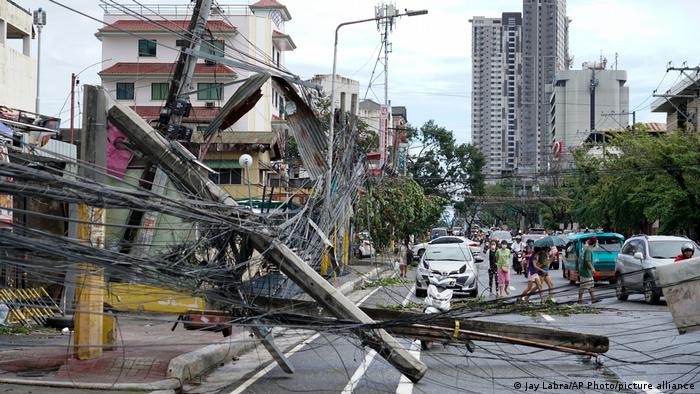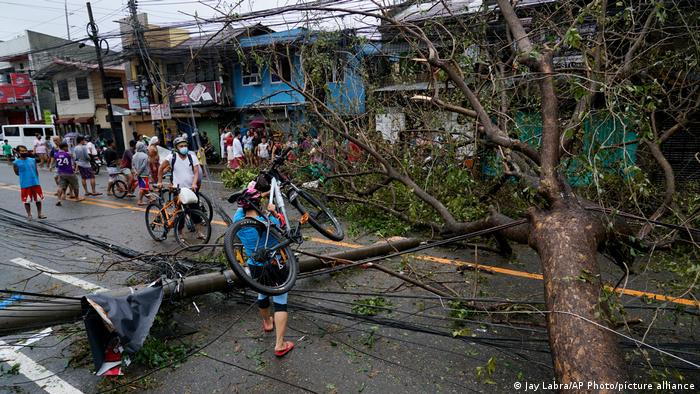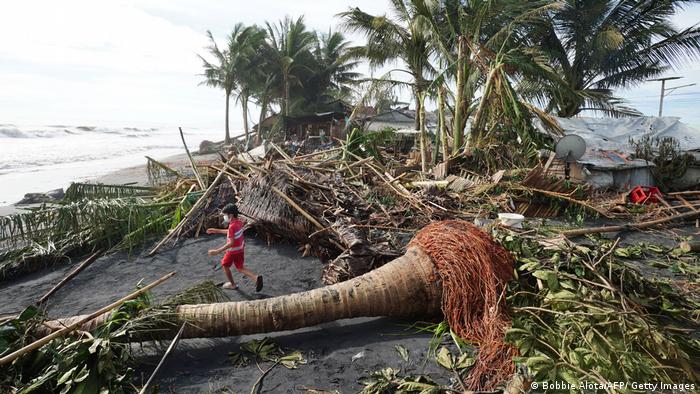Typhoon Rai triggered landslides, floods and other accidents in southern and central Philippines, killing at least three people. Emergency services have been working around the clock.

The storm also hit major population centers like Cebu city, home to almost 1 million people
At least three people had died and two others were injured as typhoon Rai continued to batter southern and central Philippines on Friday, according to the country's national disaster agency.
The tropical storm, one of the most powerful of the year, made landfall on Thursday, with winds up to 195 kilometers (120 miles) an hour. Rai has weakened since making landfall, being downgraded from a Category 5 storm — the highest classification — to a Category 3.
More than 332,000 people had evacuated high-risk villages and around 15,000 of them had sheltered in evacuation centers, presidential spokesperson Karlo Nograles said.
The powerful winds have greatly damaged towns and cities, with trees uprooted, roofs torn off, and electricity lines cut.
Several villages were flooded in the wake of the storm as well.

Aid workers clear out city streets as strong winds bring down civic structures
The mayor of Mindanao island, the second-largest island of the archipelago, told a local media outlet that the typhoon had ravaged Surigao city, in Mindanao's northeast, for several hours, causing "severe" damage. Surigao city has a population of around 170,000 people.
Scores of flights were canceled and dozens of ports temporarily closed to offset the impact of the typhoon.

Strong winds have uprooted trees, seen here is the destruction on Friday on coastal town of Dulag, Leyte island, central Philippines
Wind speeds slightly ease, typhoon heads for exit
Rai, locally known as Odette, was a super typhoon, the equivalent of a Category 5 hurricane in the United States, when it slammed into Siargao island on Thursday.
But wind speeds had eased to 155 kilometers an hour (96 miles an hour) by Friday. At 1 p.m. local time on Friday, the eye of the storm was in the vicinity of the island province of Palawan, moving westward towards the South China Sea, according to the Philippines' storm warning agency.
Typhoon Rai hit the Philippines quite late in the typhoon season, with most storms developing between July and October in the region.
rm/msh (Reuters, AFP)
No comments:
Post a Comment